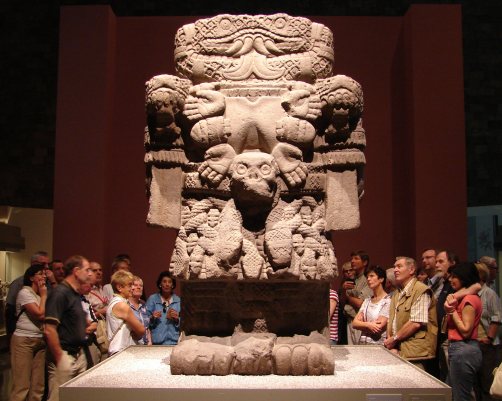Walking through the Aztec hall of the Museo Nacional de Antropología in Mexico City, the visitor notices that so many of the sculptures depict the gods of war and evoke the terrifying vision of human sacrifice. Indeed, these deities are the mythic images that represent the values of a society devoted to conquest. But one form stands out (sits, actually) in a completely alternative posture.
The 1.2 metre-high statue depicts a male figure seated cross-legged on a temple platform (or perhaps a drum)

